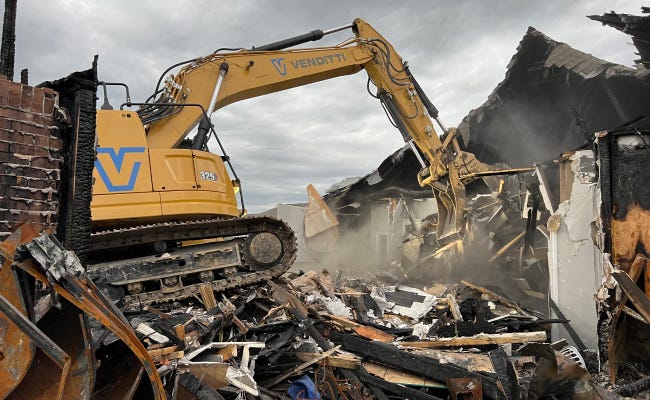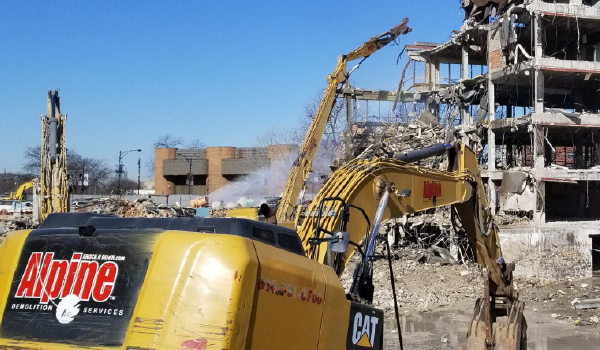Streamlining Workflow: Tools and Tools for Interior Demolition
Streamlining Workflow: Tools and Tools for Interior Demolition
Blog Article
The Ultimate Overview to Inside Demolition Techniques and Devices
Within the world of interior remodellings, the art of demolition is an essential phase that calls for precision, ability, and the right collection of devices. Whether you are a skilled specialist or a Do it yourself enthusiast, comprehending the complexities of indoor demolition strategies can make all the distinction in accomplishing a successful task outcome.
Vital Indoor Demolition Tools
When taking on interior demolition jobs, having the suitable devices is essential for effectiveness and safety. Among one of the most crucial devices for indoor demolition is the demolition hammer. This heavy-duty device is created to appear difficult products like drywall, floor tile, and concrete. Its effective hammering activity can swiftly demolish walls, floorings, and various other structures. In addition, a crowbar is indispensable for removing fixtures, trim, and other materials. Its take advantage of enables the easy extraction of nails and other fasteners without damaging the surrounding surfaces - interior demolition.
One more vital tool is a reciprocating saw, which is best for puncturing a range of products such as plastic, steel, and wood. Its capacity to make accurate cuts in limited areas makes it optimal for demolition job. An energy knife is necessary for reducing materials like carpeting, plastic flooring, and insulation. Its sharp blade guarantees exact and clean cuts, assisting in the removal of unwanted materials. Overall, having these vital indoor demolition devices will considerably boost the performance and safety and security of any demolition job.

Safety Precautions Throughout Demolition

Additionally, all workers included in the demolition procedure must obtain adequate training on the proper handling of tools and equipment to decrease mishaps. It is important to protect the workspace by setting up indications and obstacles to prevent unapproved accessibility - interior demolition. Consistently evaluating and keeping devices and equipment can also contribute to a safer working environment. By adhering to these safety precautions, indoor demolition tasks can be performed effectively while focusing on the well-being of all people included.
Strategies for Removing Walls
Carrying out proper security preventative measures during interior demolition projects is crucial for developing a protected functioning environment, and one key facet of such projects involves understanding methods for removing wall surfaces. One generally utilized approach is manual demolition, which requires using standard hand devices such as sledgehammers, crowbars, and energy knives to very carefully dismantle read more the wall item by item. This technique permits greater control over the demolition procedure, specifically in delicate areas where accuracy is crucial.
For larger, a lot more complex walls, mechanical demolition might be necessary. This includes making use of heavy equipment like excavators or excavators to tear down wall surfaces successfully. It is essential to make certain that the structural stability of the building is not jeopardized during mechanical demolition.
An additional technique for eliminating wall surfaces is deconstruction, where the wall is taken apart in such a way that preserves reusable materials. This lasting method is eco-friendly and can also help in reducing disposal expenses. Whichever technique is utilized, it is important to follow correct safety procedures and think about the architectural implications of wall elimination to ensure an effective indoor demolition job.
Removing Floor Covering Like a Pro
Effectively eliminating floor covering throughout interior demolition requires the appropriate tools and techniques to make certain a smooth and successful process. The primary step in removing flooring is to get rid of the area of any kind of furnishings or barriers. Next, identify the kind of floor covering to identify the ideal removal technique. For wood or laminate floor covering, start by eliminating the walls and afterwards use a floor covering scraper to lift and remove the planks. Carpeting removal includes cutting the rug right into manageable areas and rolling it up for disposal. For tile or vinyl floor covering, a chisel or flooring scrape can be used to pry up the sheets or floor tiles. It's important to use protective gear such as gloves, goggles, and a mask to prevent injuries link and exposure to dirt and debris. Additionally, having a dumpster or marked disposal location all set for the gotten rid of floor covering materials is crucial for keeping a clean workplace. By complying with these techniques and making use of the right tools, eliminating flooring like a pro can be accomplished efficiently and properly.
Proper Garbage Disposal Approaches
After successfully eliminating floor covering making use of the ideal tools and techniques, the next essential step in the indoor demolition procedure is carrying out appropriate waste disposal approaches. Correct waste disposal is crucial for keeping a tidy and risk-free job setting throughout and after demolition.

Specialists should comply with local guidelines concerning waste disposal to stay clear of penalties and fines. Utilizing specialist waste administration services can simplify the disposal process and make sure compliance with ecological standards. By carrying out correct garbage disposal methods, interior demolition jobs can be completed effectively and sustainably.
Conclusion
In final thought, interior demolition needs the use of important tools and rigorous safety and security precautions to make sure a risk-free and successful procedure. By following these standards, interior demolition can be finished efficiently and with minimal dangers.
One of the most essential devices for interior demolition is the demolition hammer (interior demolition). On the whole, having these necessary interior demolition devices will significantly boost the efficiency and safety and security of any type of demolition task
Effectively getting rid of flooring throughout interior demolition calls for the appropriate devices and view methods to guarantee a smooth and effective procedure.After effectively removing floor covering using the appropriate devices and methods, the next essential step in the interior demolition process is implementing proper waste disposal methods.In verdict, indoor demolition needs the use of essential devices and stringent safety preventative measures to ensure a secure and successful procedure.
Report this page